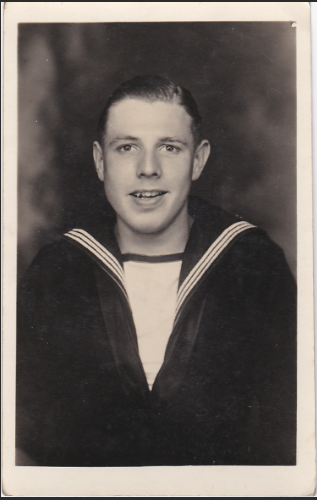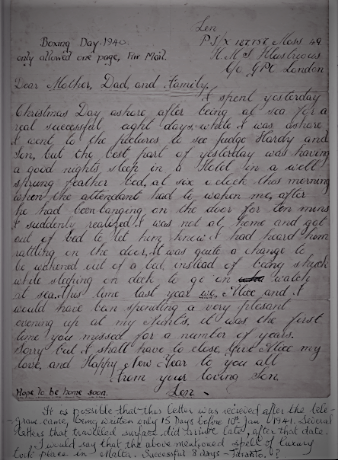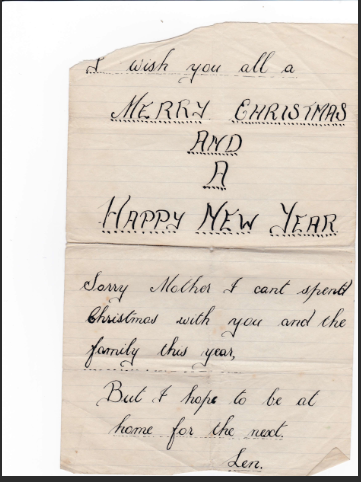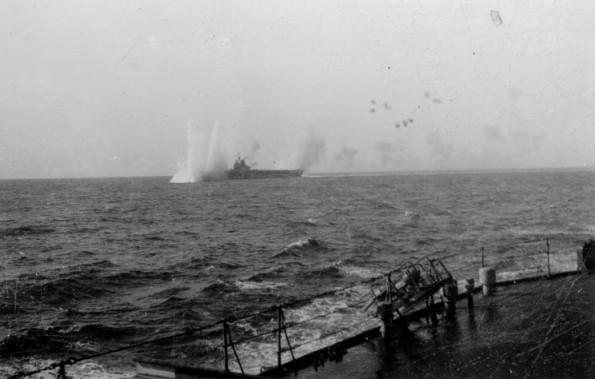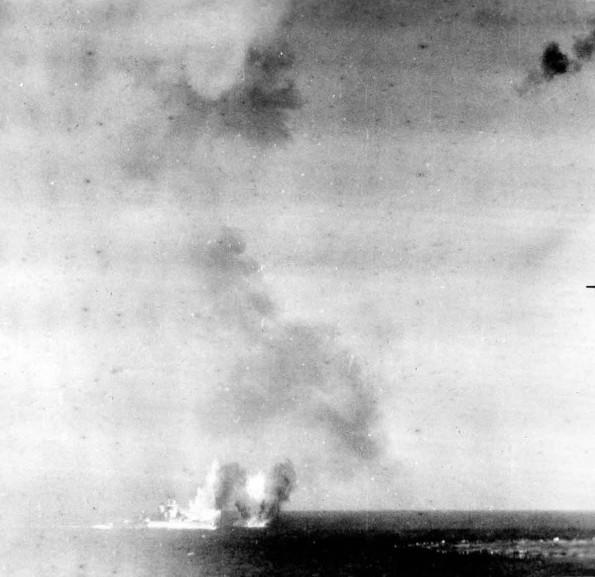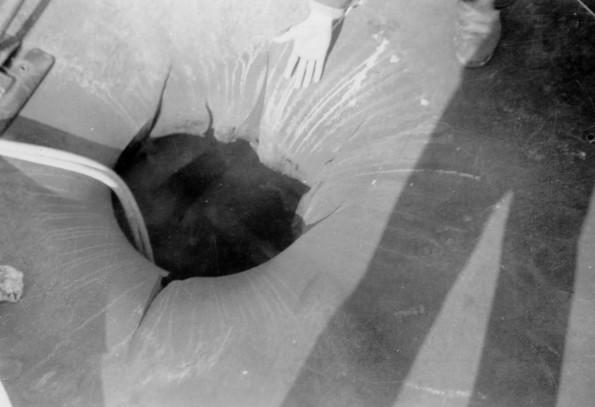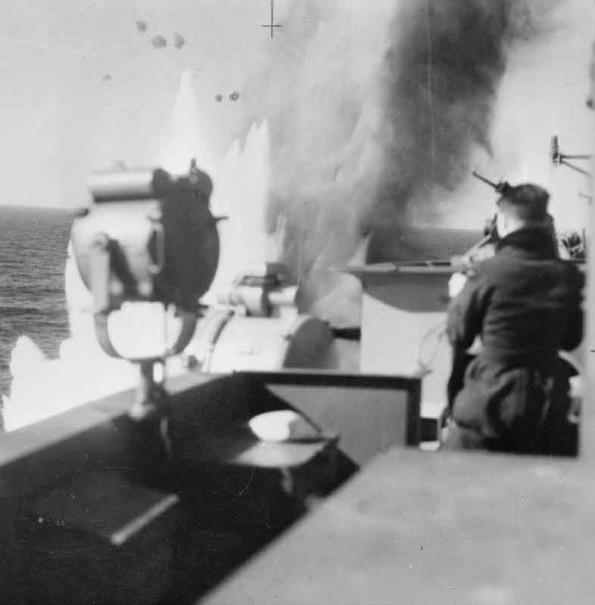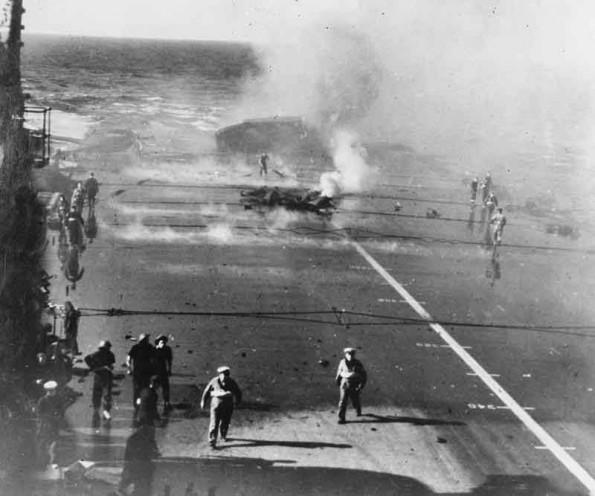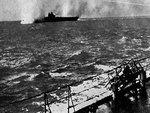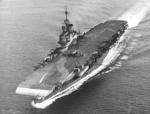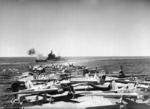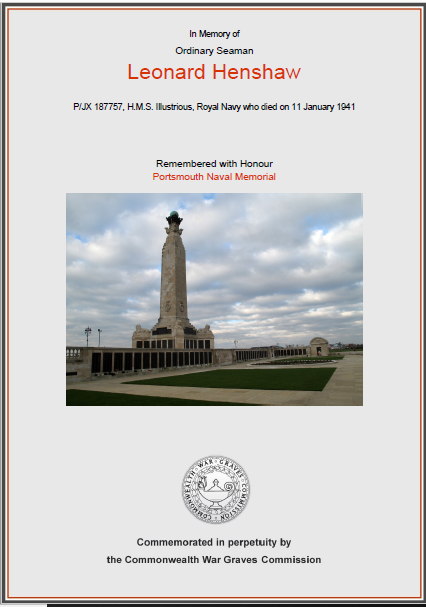Arthur Reuben Johnson, a grandson of Samuel and Sarah Riley of ‘Riley’s Row’, had four children with his wife Anne May (nee Goddard). Their third child, Eva Johnson, was born on April 2nd, 1891, and married coalminer Ernest Wilkinson Henshaw on June 17th, 1916. Eva already had an illegitimate son, Allan Johnson, born on September 2nd, 1908, at 9 Station Road. With Ernest, Eva had three more sons: Bernard (July 28th, 1917); Leonard, (April 22nd, 1920); Colin, (December 20th, 1924).
——————————————————————————————————————————
I would like to thank Phil Henshaw for sending the following account of his uncle Leonard. Phil and I have a common ancestor .. David Johnson (1838-1907), master joiner of Bath Street, Ilkeston.
Leonard (Len) was born on April 22nd 1920, one of three brothers born to Eva (nee Johnson) and Ernest Henshaw — half-brother Alan Johnson was born out of wedlock to a different father. Colin (my Dad) said that Len was the more rumbustious one of the four, and he looked up to him more than the others, perhaps as a protector during schooldays. His first job after leaving school was at Gisby’s the fishmongers on Bath St, Ilkeston. Mrs Gisby ran the shop following her husband’s death, due it was said to tetanus after being pierced by a fishbone. Some Saturday nights Len would bring home a parcel of fish of various kinds, perhaps getting close to its sell-by date. There were no freezers in those days, instead a huge ice-box.
Len and his pals used to spend time, playing cards for money, often going over the fields where they would not be disturbed by the police. They also used his father Ernest’s cabin in the garden when Ernest was at work. Five or six of them would squeeze inside and money would be exchanging hands on the whim of the cards. Len would often ask Fred (the lodger) for a 5 shilling loan until payday, and Fred always put his hand in his pocket. Colin wasn’t sure whether Fred ever got his money back.
After a couple of years, Len got a job at Raleigh cycle works in Nottingham. He bought a Raleigh Golden Arrow, for £4.10 shillings, with a pound off for employees. He rode the bike to work and back, in fact on a few occasions he dashed home on his bike for a hot dinner during his lunch hour. The family lived on Flamstead Road at this time and the front door was kept open for him to run in, gobble his dinner and set off back.
Len enjoyed sport, playing football for a local team and later cricket and football for Raleigh.
Then the war came. Frank Wright, a neighbour was one of the first to join up with the Army. On his first leave he came round to the house and Colin recalled he and Len conferring in the kitchen, with Frank inspiring Len on the ‘grand cause’. Soon after, early in 1940, Len volunteered at the age of 19 for the Navy. He trained at Butlin’s Holiday camp, renamed HMS Royal Arthur, in Ingoldmells near Skegness. Later he was posted to Shotley, on HMS Ganges, then HMS York for active service for a few months before transferring to HMS Illustrious, an aircraft carrier, in late 1940.
Most of Illustrious’ activity was in the Mediterranean, where in 1940 an attack was carried out on the Italian fleet at Taranto. In January 1941, the Illustrious came under attack from German dive bombers and sustained severe damage and the loss of over 40 crew, including Len.
A telegram arrived at home a few days later giving the terrible news that Len had been killed in action. It was few months before his 21st birthday. His mother took the news very badly. The courtship between Len and Alice Butler was over. They were due to be married after the war. The wedding ring was retained and Linda wore it when she married Colin in 1948.
The letter reproduced below was written on Boxing Day 1940 and, as Colin suggested, was possibly not received until after the fateful telegram had arrived.
Other letters home are transcribed below.
Letter home from HMS York 1st October 1940
“Dear Mother, Dad and Family
Mother love, I hope you are keeping well along with my dear Father, Colin, Bernard and not forgetting last but not the least Fred. I know he can’t read so tell him I’m asking about him. It’s a pity I can’t get home for Christmas and tap poor Fred once again but still when I come hope again it will about be on the other leg.
I’m having a grand time but I can’t help but think of home sweet home when the days work (I think that’s the word) is done and as I lie on my pillow before I go to sleep my thoughts seem to go straight home, then in my dreams home seems so near, and yet so far.
Sorry Folks but I can’t think of any more to write
From your loving son Len”
Len was obviously transferred to HMS Illustrious between October and November 1940.
Letter home from HMS Illustrious 25th November 1940
“Dear Mother, Dad and Family
I am writing this letter at sea, I have just had my supper and I certainly enjoyed it – eggs chips and tomatoes and the time now is about 7.15 and I have to go on watch at 8 o’clock till 12 so I shall have to hurry to finish your letter so please excuse the writing. Last time the ship was in port I received four letters one of which Col (Colin, Len’s brother) had wrote. They were the first letters I have received since I left England and I was very pleased to hear that everything was alright at home. I am also very pleased to hear that the German plane that made a lightning raid over the Ironworks (at Stanton) met with no success with the bomb which appeared to be as big as a pillar box which apparently dropped on nothing of importance.
Col I am very sorry to tell you that I can’t get any customers for your young budgies as I really could do with 50% of the takings the boys in the same mess as I think there is enough rattle without having any more. Oh by the way Col I have got a great ship now, HMS Illustrious, we keep giving Musso (Mussolini) something to bother about. The other week the Taranto the big Italian naval base had a right due by our bombers. Their objective was their capital ships and a good job we made of them too.
Well Mother I don’t think it will be very long now before I am home, sorry I could not manage it for Christmas. I’d loved to have been home for Christmas dinner, better luck next time. When I close up to go on watch I shall be wearing an overcoat and on top of that a raincoat. It’s a bit cold round this part of the Med so don’t forget about the socks and remind Alice about the pullover. Mar I shall not be changing ships anymore so don’t be afraid of the goods getting lost. Don’t send any fags Mother I can get them much cheaper.
Well dad I hope you are having a good time and still digging for victory as we are sailing to victory.
Well folks I am sorry but I have to be leaving you. So hear’s to the next time
From your loving son Len
PS Don’t forget to write few letters now and again just to let me know how things are going at home sweet home.”
Six weeks after writing this letter, the Illustrious came under attack from German dive bombers and Len was sadly one of the casualties.
Tragically, a letter to Len had been written (probably by Colin), dated 14th January 1941, 3 days after Len had been killed. It’s not clear whether it was ever sent, perhaps the news had reached the family before it had been posted :
“ Dear Len,
We know you are well as we received two letters yesterday, Monday, one being an Air Mail taking just 18 days from writing to delivery. The other being on the blue a considerable length of time 6 wks or more. We are all batting well at home, all or but my Grandad, who has bronchitis, and is sleeping beside me as I am writing this letter to you.
Fine ship you are on Len. Ma saw it on pictures last Saturday entering the fine harbour of Alexandria but you must have been scrubbing deck as she did not see you. There’s no 15” on your ship Len so you won’t be able to hide in one when they are coming for you. You’ll perhaps know something about Zonkers when you are back Len so you want to think of some questions, because you know who always used to win at it before. Perhaps you want to know about your pals so I’ll put in a list of them in the Forces. (followed by a list of names and which of the armed forces they had joined).
Ilkeston has not had a smell of an air attack too what e.g. London, Coventry, Birmingham, Sheffield, Southampton, Manchester and the Mersey Side. It’s a good job we’ve got the bit of water Len and the ships.
Don’t worry about us or Alice Len we are all right.”
From WW2 Today :
Ferocious Luftwaffe attack on HMS Illustrious ….
HMS Illustrious under attack on the 10th January 1941. Courtesy MaritimeQuest.
HMS Illustrious attacked by dive bombers. 10 January 1941, in the Mediterranean off the Italian island of Pantelleria. In the first action by German bombers in the Mediterranean, HMS Illustrious survived a ferocious attack including that of over 40 Ju-87’s and Ju-88’s, to make it to Malta. A bomb explodes on HMS ILLUSTRIOUS while another near miss lands next to her.
The Luftwaffe announced their arrival in the Mediterranean with a vengeance. The new aircraft carrier HMS Illustrious, whose planes had so successfully attacked the Italian fleet at Taranto, was the subject of a sustained attack by Ju 87 dive-bombers as it escorted a convoy to Malta.
The main forces of the Mediterranean Fleet, consisting of H.M. Ships Warspite and Valiant with H.M.S. Illustrious and 7 destroyers, were operating in support in the Eastern Basin and covering the passage from Alexandria to Malta of a convoy which was escorted by H.M. Ships Perth, Orion, York and Ajax. On the 10th January the Fleet was attacked several times by various types of aircraft.
The first attack was by torpedo bombers on the Battle Fleet, in which torpedoes missed after avoiding action had been taken. The second, which occurred at about 1235, was carried out by 25 or more Ju 87 and 88 dive-bombers which attacked with great determination and skill, thus confirming the arrival in the Mediterranean of units of the German Air Force.
In this attack H.M.S Illustrious was severely damaged as a result of 6-direct bomb hits and several near misses, which caused fires and disabled her steering gear. Her casualties were 83 killed, 60 seriously and 40 slightly wounded, including several officers. H.M.S. Warspiie also sustained slight damage from a near miss. During this attack one Fulmar and one Swordfish were shot down, their crews being saved, and two enemy aircraft were shot down by gunfire.
At 1330 an unsuccessful attack was made on Illustrious by high level bombers and between 1600 and 1700 a second dive-bombing attack by about 30 aircraft was made on her and the Battle Fleet in which another hit was believed to have been made on Illustrious, and H.M.S. Valiant had one killed and 3 wounded from near misses.
During this attack Fulmars from Illustrious, which had refuelled at Malta, shot down 6 or 7 Ju 87 or 88’s and damaged several others. Heavy bombs of about 1,000 lb. were used in all these attacks. Illustrious, covered by the Battle Fleet, arrived at Malta at about 2100 after a final, but unsuccessful, attack had been made oh her by torpedo bombers outside the entrance to Grand Harbour. Eleven of her Swordfish and 5 Fulmars were destroyed by fire.
From the weekly Naval Situation report see TNA CAB/66/14/33
Air Mechanic Rayburn was on board HMS Illustrious and somehow lived to tell his story:
My action station as with all maintenance crews, was in the hanger with the aircraft, which by the way were all heavily armed, and loaded with torpedoes ready for an attack on the Italian Fleet.
Illustrious was armed with 16 4.5 dual purpose guns, and 8 6 barrelled 2lb quick firing AA weapons. The ship kept jumping and shaking. Several large bombs hit the shop aft, and the after hanger was on fire. The noise was indescribable. In my baptism of fire, all that sticks in my mind are impressions. I was standing more or less in the centre of the hanger. A chap came down from the flight deck; his rubber suit was full of holes with blood leaking from all of them. I helped carry him down to the casualty station in the washroom flats.
The surgeons were busy. Blood washed from side to side with the sway of the ship. I returned to my action station in the hangar. The ship continued to rock and sway.
I looked up with fear and apprehension. Then there was an almighty flash as a 1,000 lb bomb pierced the 4 inch armoured deck and exploded. I was only aware of a great wind, and bits of aircraft, debris, all blowing out to the forward lift shaft of 300 tons, which was also blown out. There were dead and wounded all around. My overalls were blown off and I had small wounds to the back of my head and shoulder.
I was probably 10-15 feet away from the bomb when it exploded. Luck I survived? I prefer the thought of someone looking out for me. The hanger by then was burning all over. The ships commander came and said, ‘come on lads close the armoured doors.’ The overhead sprays then flooded the hanger.
The ship started to sink by the stern, and everyone had to blow up lifebelts. Then came a spot of humour in all that chaos. Poor old Corporal Gater came through a side door white as a sheet saying ‘I wish I hadn’t bloody joined.’ The battering carried on for six to seven hours. There were many wounded piled up. The aft surgeons station had been destroyed, and the forward station was unable to cope quickly with so many casualties. Captain Boyd finally steered with the engines into Malta. The ship was quiet at last.
A hole in the armoured flight deck of HMS Illustrious where a 1,250 pound bomb penetrated. Courtesy MaritimeQuest.
Some repairs were carried out at Malta (where there were further air attacks) before HMS Illustrious returned to Alexandria. There she was sufficiently patched up to make the journey, via the Suez Canal and round Africa, to U.S. shipyards in Norfolk, Virginia. She was out of the war for the remainder of the year.
A near miss. HMS Illustrious attacked by dive bombers. 10 January 1941, in the Mediterranean off the Italian island of Pantelleria. in the first action by German bombers in the mediterranean, HMS Illustrious survived a ferocious attack including that of over 40 ju-87’s and ju-88’s, to make it Malta.
The view of the flight deck from the ship’s bridge.
HMS Illustrious
| Country | United Kingdom |
| Ship Class | Illustrious-class Aircraft Carrier |
| Builder | Vickers-Armstrong, Barrow-in-Furness, Britain |
| Laid Down | 27 Apr 1937 |
| Launched | 5 Apr 1939 |
| Commissioned | 25 May 1940 |
| Decommissioned | 1 Dec 1954 |
| Displacement | 23000 tons standard; 28661 tons full |
| Length | 744 feet |
| Beam | 95 feet |
| Draft | 28 feet |
| Machinery | 6 Admiralty 3-drum boilers, 3 Parsons geared turbines, 3 shafts |
| Power Output | 110000 SHP |
| Speed | 30 knots |
| Range | 10,700nm at 10 knots |
| Crew | 1200 |
| Armament | 8×2 QF 4.5in naval guns, 6×8 QF 2 pounder naval guns |
| Aircraft | 15 Fulmar, 18 Swordfish |
Illustrious was the lead ship in her class of aircraft carriers. The design was unique in the sense that the flight deck was armored, unlike many of her contemporaries outside her class; however, the added protection also limited the total number of aircraft she was capable of carrying. Her first assignment brought her to the Mediterranean Sea where her main mission was to launch aircraft which covered Malta convoys. In Nov 1940, she launched 21 torpedo bombers against the Italian fleet at Taranto, and achieved spectacular success after sinking one battleship and damaging two others. On 11 Jan 1941, she was attacked by German dive bombers while escorting a convoy, suffering 8 bomb hits. While repair work was being done at Malta, she was once again bombed. She sailed for Alexandria, Egypt for temporary repairs, and then sailed for the Norfolk Navy Yard in Virginia, United States for permanent repairs.
The repair work completed in May 1942. By which time, Japan had entered the war, threatening British possessions in Asia. The British Royal Navy, particularly, suffered a damaging defeat after the Japanese raids into the Indian Ocean in Mar-Apr 1942. As a result, Illustrious was dispatched to the Indian Ocean instead of returning to the Mediterranean. In May 1942, her aircraft provided cover for the British troops landing at Diego Suarez, Madagascar against French and French colonial troops.
In 1943, Illustrious returned to the Mediterranean Sea and joined Force H based in Gibraltar. In Sep 1943, her aircraft covered Allied troops in the Sicily invasion.
In 1944, Illustrious returned to the Eastern Fleet in the Indian Ocean for strikes against Japanese garrisons in the Southwest Pacific region. In 1945, after a period of rest and re-supply in Fremantle, Australia, she sailed north and joined Allied Task Force 57 to cover the Okinawa operation. Off Okinawa, she was hit and damaged by two Japanese special attack aircraft.
After the war, Illustrious’ role was reduced to a training and trials ship due to the heavy damage suffered during WW2. She was finally modernized between Jan and Aug 1948, and then served another six years before she was decommissioned. She was sold for scrap on 3 Nov 1954 and was broken up in 1956 as Faslane.
HMS Illustrious Operational Timeline
| British carrier HMS Illustrious left Malta for Alexandria, Egypt. | |
| Illustrious was commissioned into service. | |
| The brand-new armoured aircraft carrier, HMS Illustrious, and a powerful escort left Gibraltar. Although her air group was small (only 15 fighters and 18 bomber aircraft), Illustrious was one of the first warships to be fitted with air-warning radars which gave her a big advantage in fleet defence, as she could detect and track hostile aircraft and give her aircraft time to gain altitude. With both Illustrious and Eagle under his command, Admiral Cunningham could now take the offensive. | |
| British Swordfish torpedo bombers from carrier HMS Illustrious attacked the port of Benghazi, Libya, bombing shipping and laying mines. Italian destroyer Borea was sunk by torpedoes and destroyer Aquilone was damaged by a mine. Italian merchant ships Gloria Stella and Maria Eugenia were also sunk. | |
| 15 British carrier aircraft from HMS Illustrious attacked an Italian convoy off Kerkennah islands, Tunisia between 0515 and 0615 hours, sinking two of the three ships in the convoy. | |
| British aircraft carrier HMS Illustrious, damaged by Stuka dive bombers on 10 Jan, completed temporary repairs and departed Malta for Alexandria, Egypt with destroyers HMS Jervis, HMS Juno, HMS Janus, and HMS Greyhound in escort. | |
| HMS Illustrious arrived at Alexandria, Egypt. | |
| British Fleet Air Arm Swordfish aircraft of HMS Illustrious spotted French submarine Le Héros off Courrier Bay, Madagascar at 0500 hours and attacked with depth charges; Le Héros attempted to evade by diving, but ultimately would be forced to surface and would be scuttled by her own crew to prevent capture. | |
| Admiral Sir James Somerville’s new Eastern Fleet launched a devastating raid on the oil refinery at Sabang in Sumatra, Dutch East Indies with aircraft flown from the carriers HMS Illustrious and USS Saratoga. | |
| Illustrious was decommissioned from service. |
———————————————————————————————————————————————-
After this brief visit with Arthur Reuben Johnson and with Leonard Henshaw, we will now have a similar brief look at Reuben’s mother, Mary Johnson (nee Riley), who, along with her sister Martha Thompson, and the children of her other sister Selina Smith, benefitted in the will of her father, Samuel Riley.

